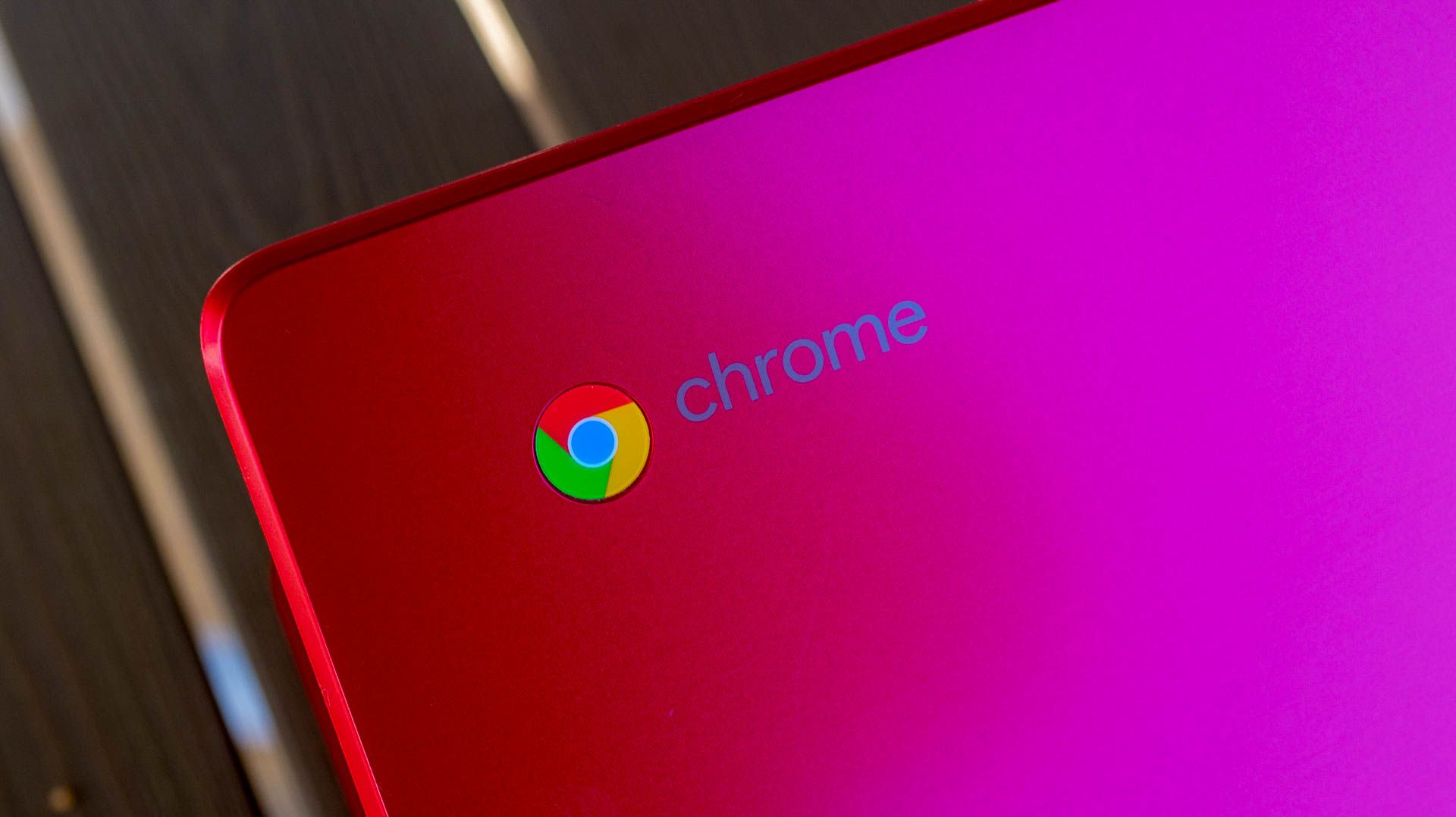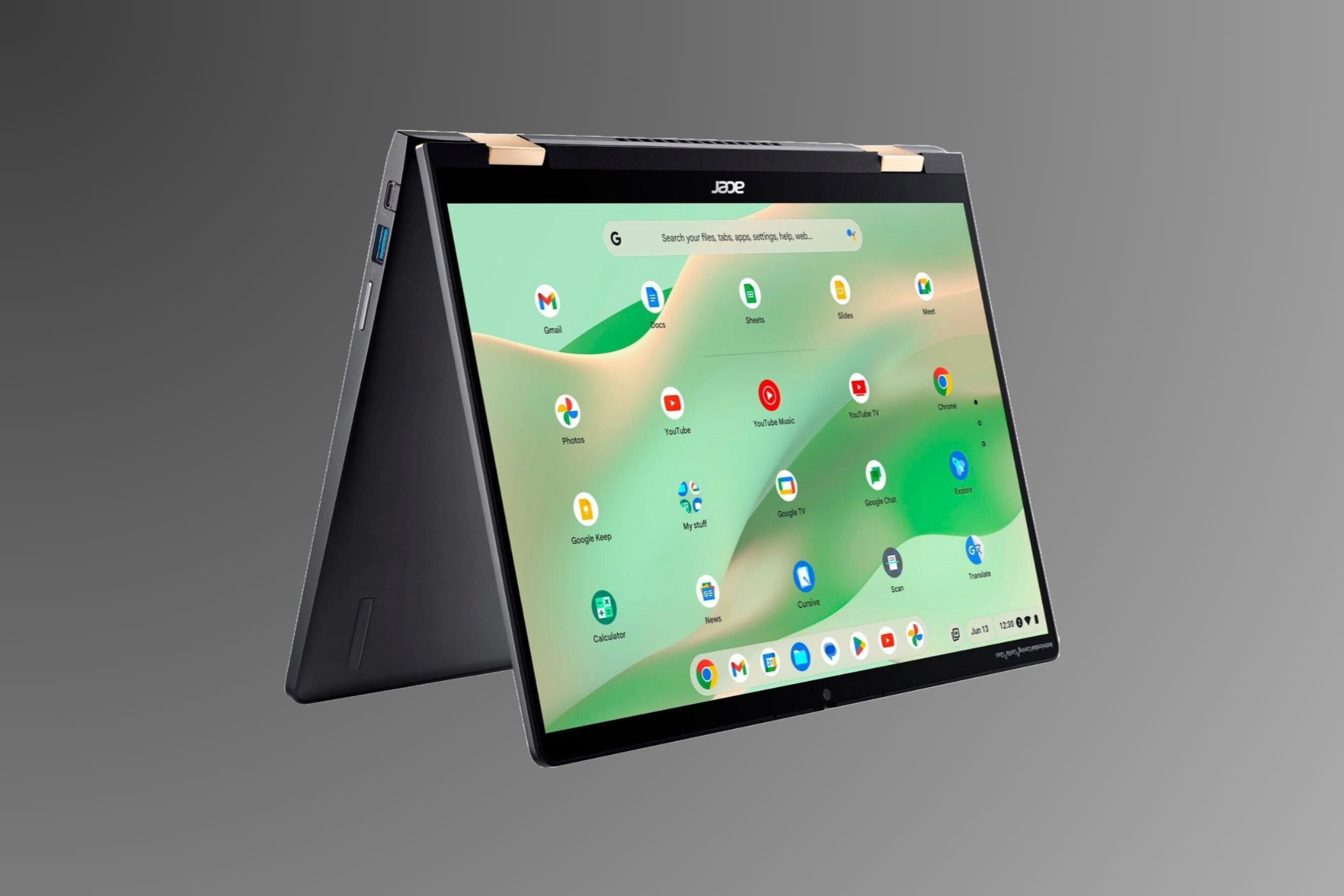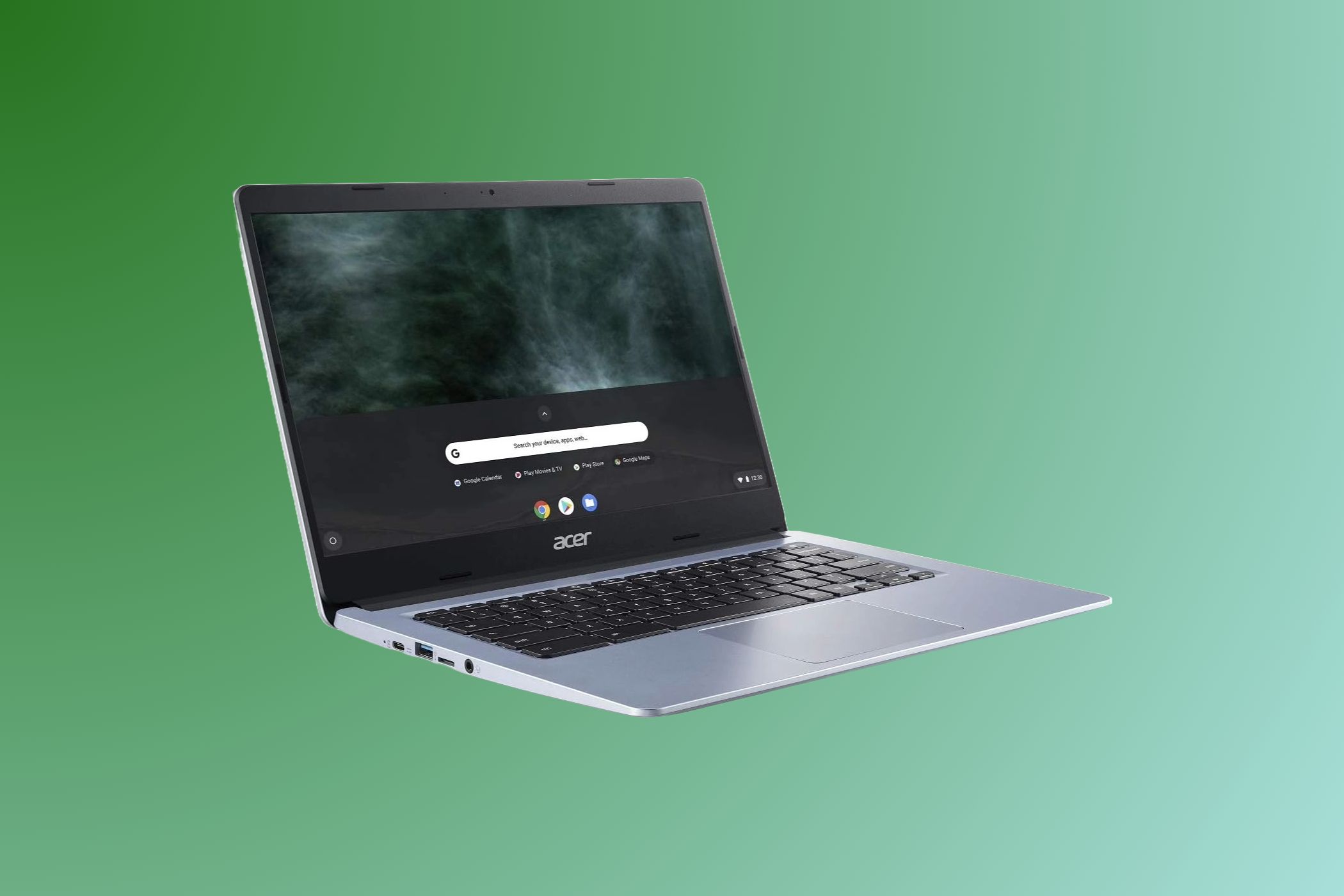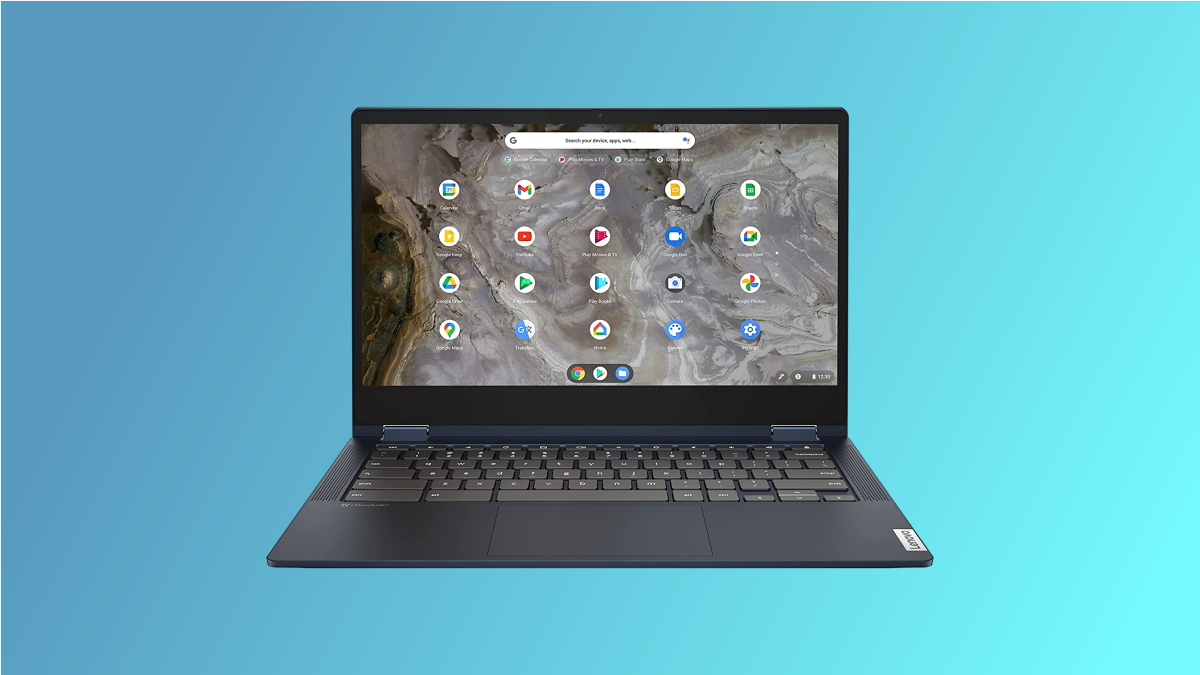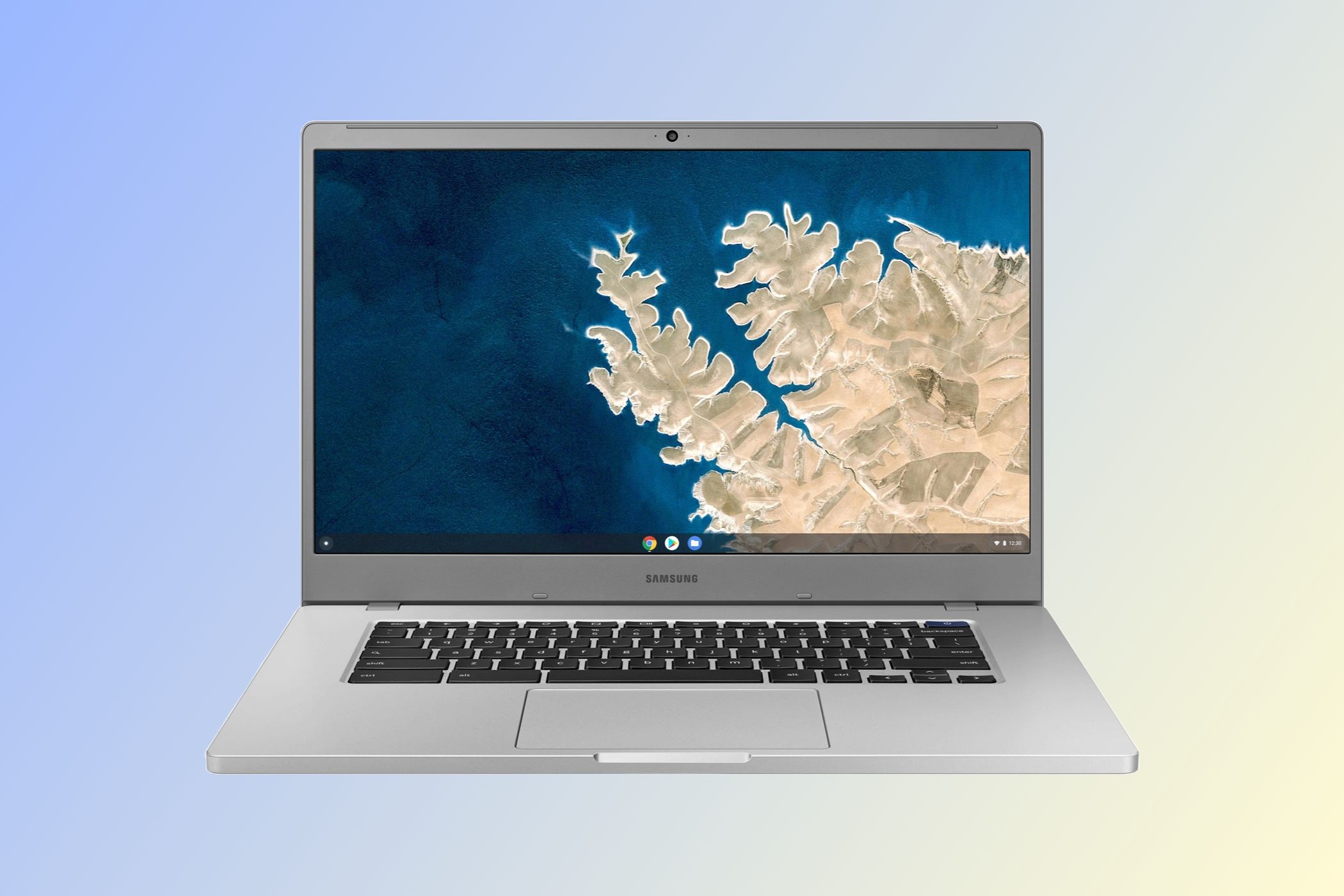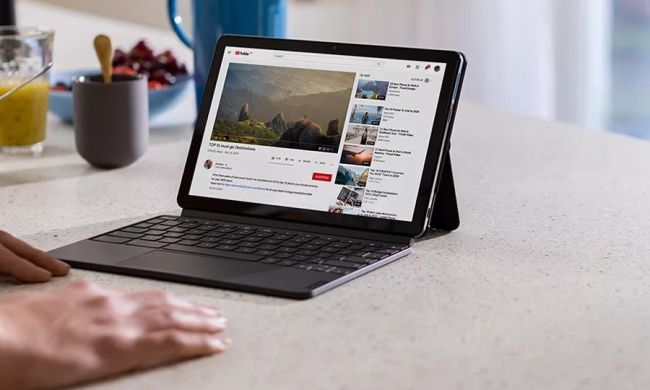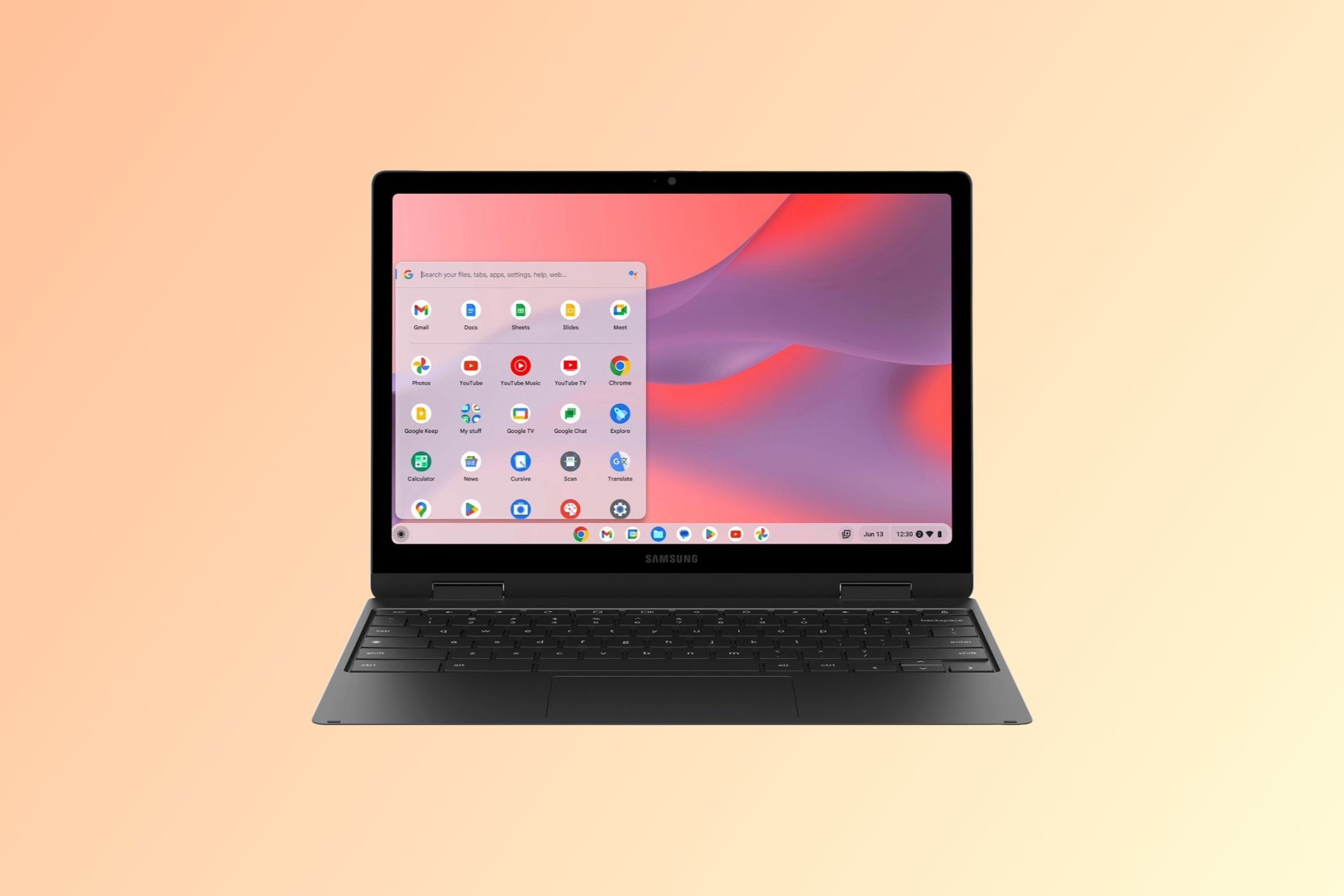Read update
- We've reviewed our recommendations and have updated many of our picks. Take a look!
Today's Chromebooks rival Windows PCs and Macs in functionality and quality. These "glorified web browsers" running Chrome OS are capable of everything you need for school or work, editing photos, and can even run Android and Linux apps.
UPDATE: 10/09/2023
We've reviewed our recommendations and have updated many of our picks. Take a look!
What to Look For in a Chromebook in 2023
Chromebooks have risen in popularity due to their simplicity and affordable price tag. They're popular in school settings and for people who don't need full-fledged computers and are great lightweight secondary devices. What should you look for when buying one?
Just like with Android phones, there's a laptop out there for everyone. Should your laptop be a Chromebook? That depends on how you use computers. For productivity, a Chromebook can be the perfect device.
If you mainly browse the web, write emails, stream music, and watch movies on your computer, a Chromebook can easily handle those tasks and more. You'll likely get better battery life at a more affordable price than a Windows PC or Mac as well.
However, those looking at a heavier workload may want to look into what other laptops are on offer, in addition to Chromebooks. Due to the price, Chromebooks typically cannot handle gaming or resource-heavy applications, such as those for 3D modeling.
We've compiled a list of Chromebooks that hit a few key categories. Whether you're a student who needs something portable, a parent looking for something durable, or you just want the best Chromebook money can buy, we've got you covered.
|
How Did We Research |
||
|
Models Evaluated |
Hours Researched |
Reviews Analyzed |
|
25 |
13 |
17 |
How-To Geek's product recommendations come from the same team of experts that have helped people fix their gadgets over one billion times. We only recommend the best products based on our research and expertise. We never accept payment to endorse or review a product. Read More »
Best Chromebook Overall: Acer Chromebook Spin 714
|
Pros |
Cons |
|---|---|
|
Faster performance than many Chromebooks |
Audio quality isn't great |
|
2-in-1 design with a nice touchscreen |
|
|
3:2 aspect ratio is perfect for productivity |
|
|
Solid build quality |
Chromebooks may have started out mainly as devices for light web browsing and more casual tasks, but that is no longer the case. Many people use Chromebooks for all of their computing these days, but this calls for better components and an overall more premium package. The Acer Chromebook Spin 714 is on the pricey side compared to many Chromebooks, but it’s also a much more solid, useable offering than much of the competition.
While they’re always usable, Chromebooks aren’t exactly known for the quality of their keyboards or touchpad. That’s part of what the slightly higher price gets you with the Spin 714, and both the keyboard and touchpad are a step above what you’d find in the average Chromebook. The keyboard is also backlit—while it's not a particularly unique feature, it's still a welcome one.
Unlike the 16:9 aspect ratio favored by many Chromebooks and laptops, the Spin 714 opts for a taller 3:2 layout, which is perfect for photo work or editing documents. With a resolution of 1920x1200, there are sharper screens available, but this resolution is still perfect for web browsing and the tasks you’d normally expect from a Chromebook. The 2-in-1 design also makes it easy to prop up for video chats or watching videos.
Chromebooks often have low-power processors, but the Spin 714 features an Intel i5-1335U that wouldn’t be out of place in a Windows laptop, and 8GB RAM is still plenty for this type of computer. The Acer Chromebook Spin 714 has 256GB storage in its base configuration, but you can also buy it with 512GB, 1TB, or even 2TB of built-in storage.
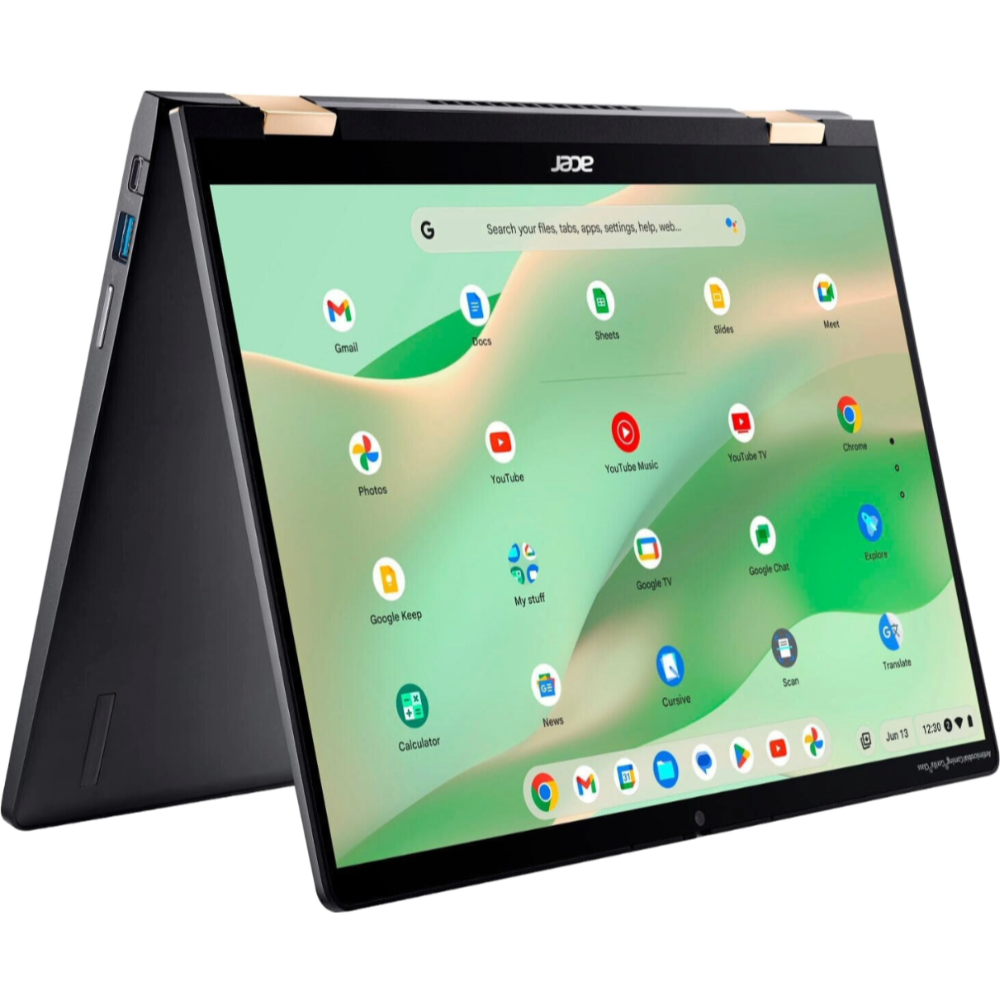
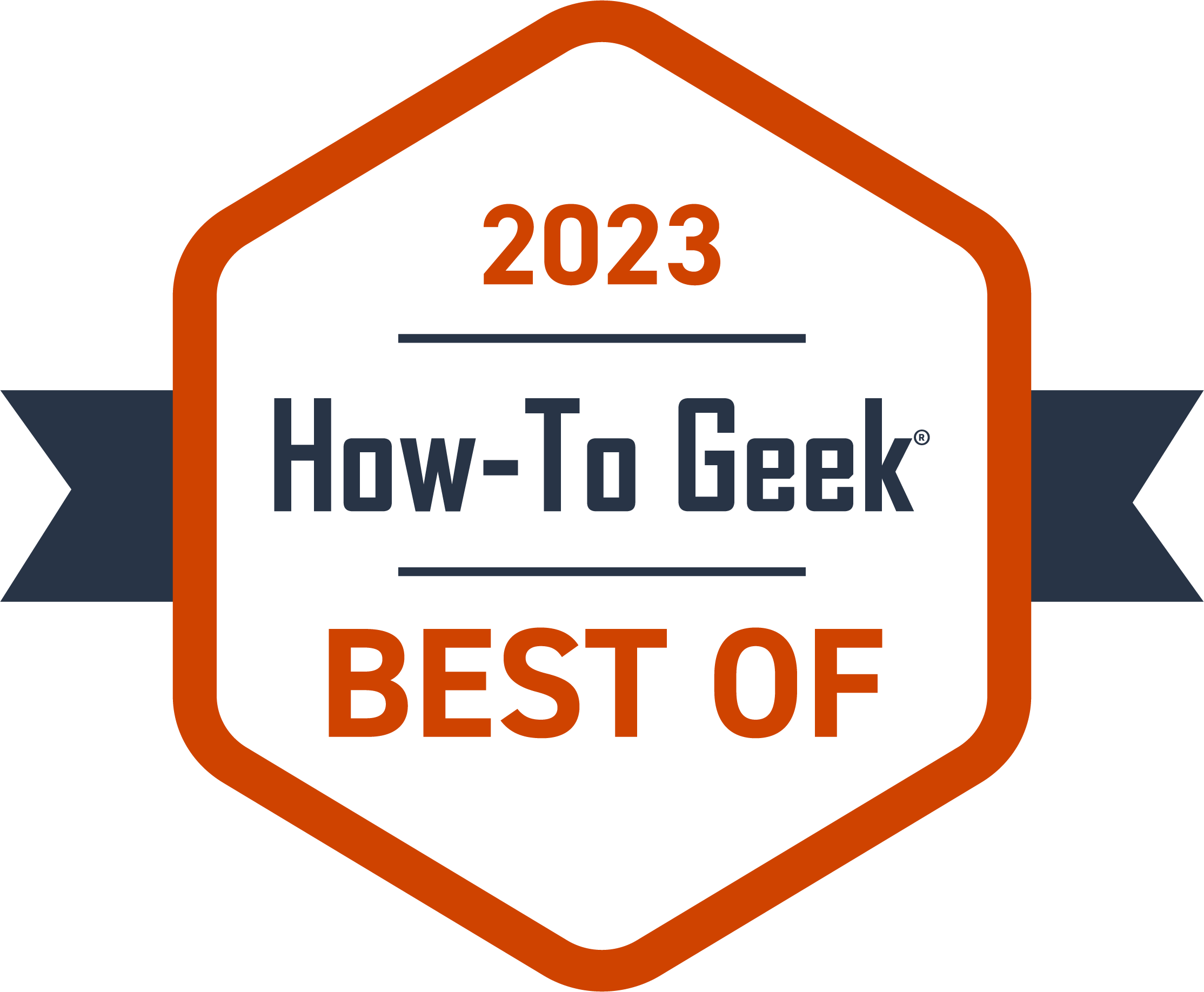
Acer Chromebook Spin 714 (2023)
The 2023 Acer Chromebook Spin 714 pairs a stylish 2-in-1 design with higher-end specs than you'd typically find in a Chromebook, making it among the most flexible models you can buy.
Best Budget Chromebook: Acer Chromebook 314
|
Pros |
Cons |
|---|---|
|
Good build quality for the price |
No touchscreen |
|
Plenty of ports and a microSD slot |
|
|
Nice looking design for a budget model |
Unless you’re looking at the highest-end models available, Chromebooks are typically more affordable than their Windows or macOS counterparts. That said, some models are cheaper than others, and a low price doesn’t guarantee a great value. That said, the Acer Chromebook 314 is plenty affordable and more than capable of delivering where you’d expect a Chromebook to excel.
One area you miss out on with a budget-oriented laptop is the overall presentation and feel. The Chromebook 314 doesn’t seem poorly built, but it’s made out of plastic and certainly doesn’t feel like there are any premium materials in the build. On the upside, the minimalist design works with the limitations, making them less noticeable.
The Intel Celeron N4000 CPU isn’t especially powerful, nor is the 4GB of included RAM impressive, but you’ll find the same or similar options on plenty of pricier Chromebooks, so Acer hasn’t skimped here. You only get 64GB of onboard storage, but given the cloud-first nature of Chromebooks, this won’t be a limitation for most people.
If you do require more storage, it’s easy to add. Not only is there an onboard microSD card slot, but a pair of USB-C ports and another pair of USB-A ports.
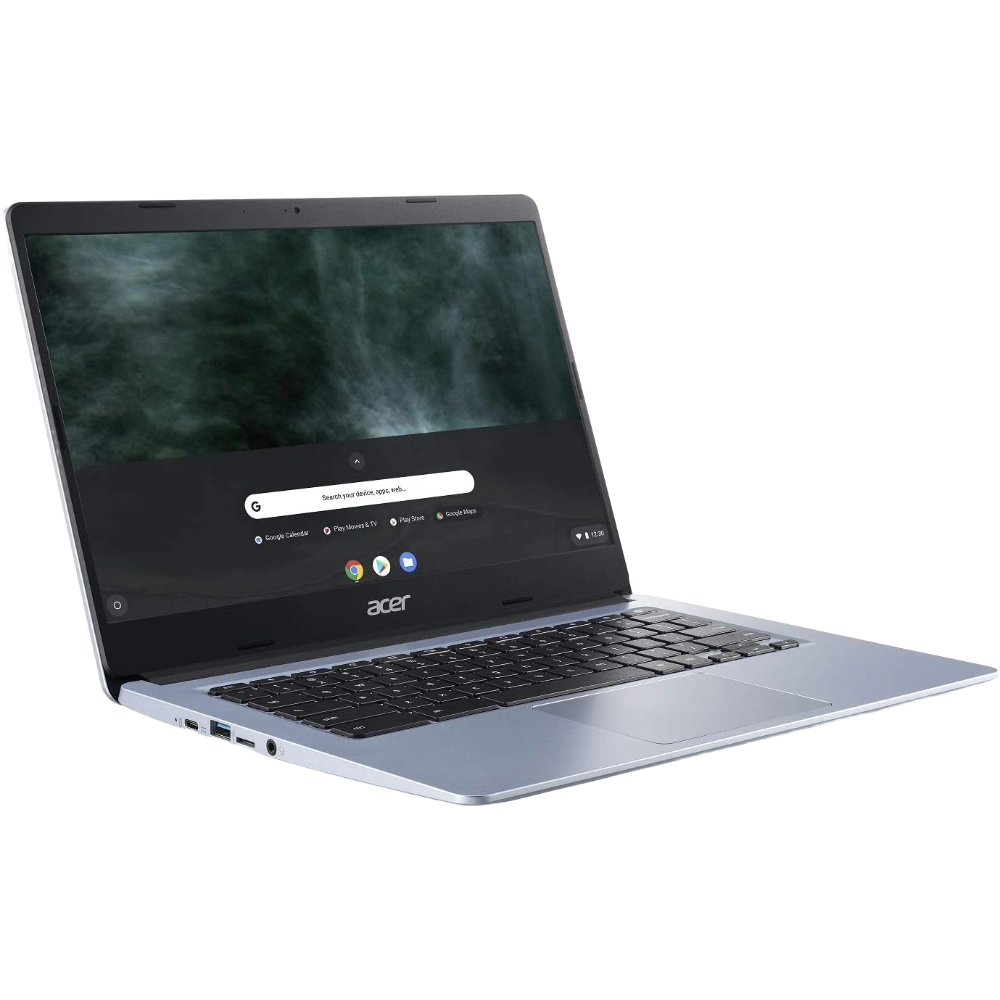

Acer Chromebook 314
The Acer Chromebook 314 proves that you don't need to spend much for a great Chromebook. It's not the most powerful, but it has everything you need for everything from browsing to office webapps.
Best Chromebook for Kids: Lenovo IdeaPad Flex 5i
|
Pros |
Cons |
|---|---|
|
Lightweight yet durable |
Middle of the road performance |
|
Solid battery life |
|
|
Nice keyboard and touchscreen |
When it comes to Chromebooks for kids, going with our budget pick would be perfectly acceptable. However, if you'd like something a little nicer, Lenovo's IdeaPad Flex 5i is a good upgrade. It's cheap, light, has great battery life, and is durable enough to handle a young child.
Kids may not notice a lousy keyboard as much as you might, but the Lenovo 5i has a nice and spacious one. It's perfect for someone learning how to type. Another bonus is plenty of ports—the Flex 5 has two USB-C ports, one USB-A port, and a MicroSD card slot.
The IdeaPad Flex 5i is powered by an Intel Core i3 processor and 8GB of RAM. That's pretty good for handling web browsing and some light Android gaming. In addition, your child can do that on the 13.3-inch 1080p touchscreen display.
For around $300, that's not a bad package for a Chromebook for a child.
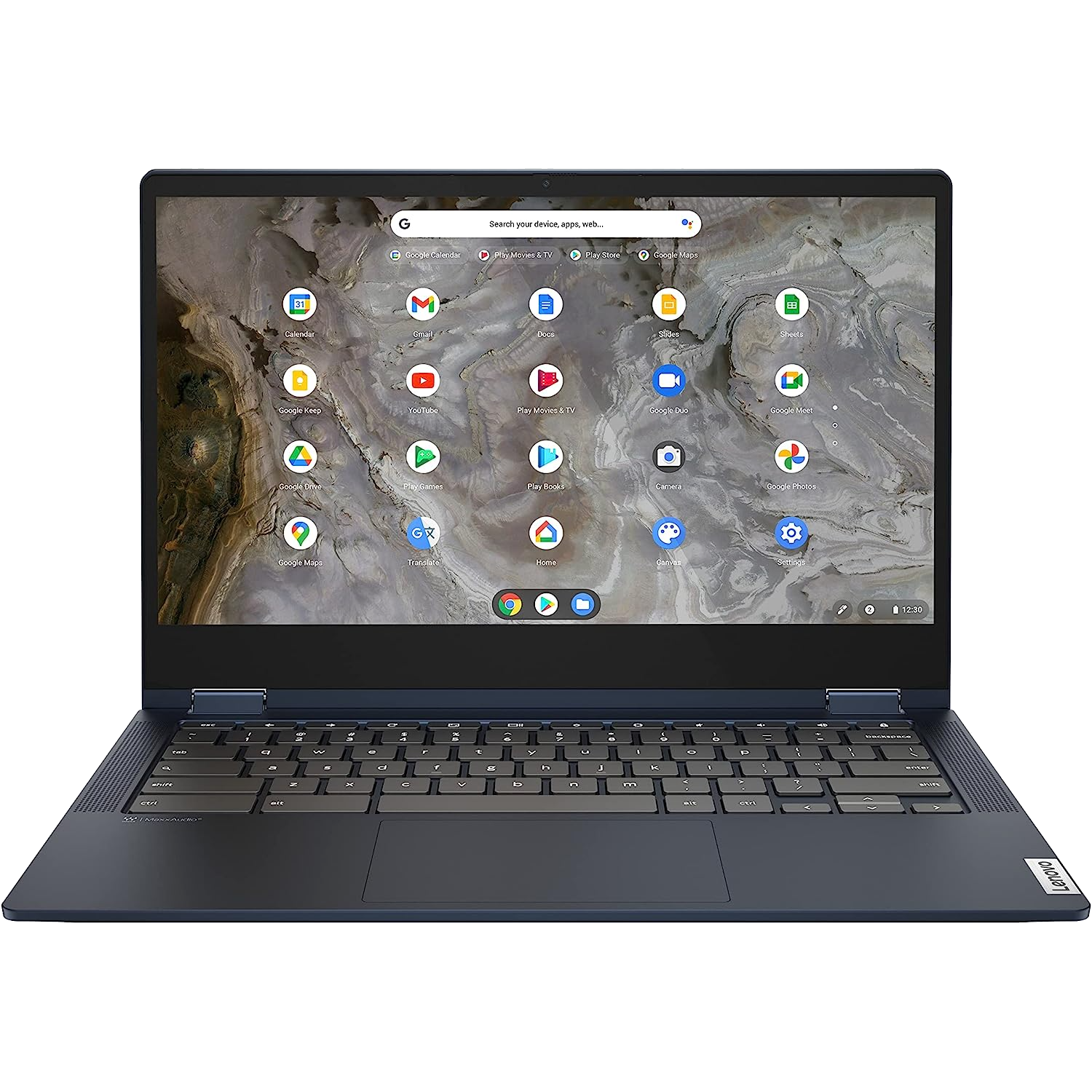

Lenovo IdeaPad Flex 5i (2023)
A durable Chromebook with a nice keyboard, lightweight design, touchscreen, and good battery life makes the IdeaPad Flex 5i perfect for kids.
Best Chromebook for Students: Samsung Chromebook 4+
|
Pros |
Cons |
|---|---|
|
Lightweight and easily portable |
Sub-par battery life |
|
Large, anti-glare screen |
|
|
Multiple storage configurations available |
Any quality Chromebook is a great option for students, but that doesn’t mean they’re all the same. Portability, a good display, and, ideally, a sleek look are all things students prioritize. The Samsung Chromebook 4+ has all of those on offer, with a stylish design and a higher-resolution screen than you’ll find in even many higher-end Chromebooks.
Portability is key for students, and the Chromebook 4+’s lightweight nature makes it easy to carry all day. It’s also quite thin, so it won’t take up much space, whether you’re tossing it into a backpack or a messenger-style bag.
This model uses an Intel Celeron N4000 chipset and features 4GB RAM, which isn’t the most powerful but should be plenty for schoolwork. More useful is the 15.6-inch, 1920x1080 display. This makes for plenty of room to work, and the anti-glare finish means you can use it anywhere, whether indoors or outdoors.
We’ve chosen the highest-spec version of the Chromebook 4+, which features 128GB onboard storage. That said, if you don’t require as much space, it’s also available in 32GB and 64GB configurations.
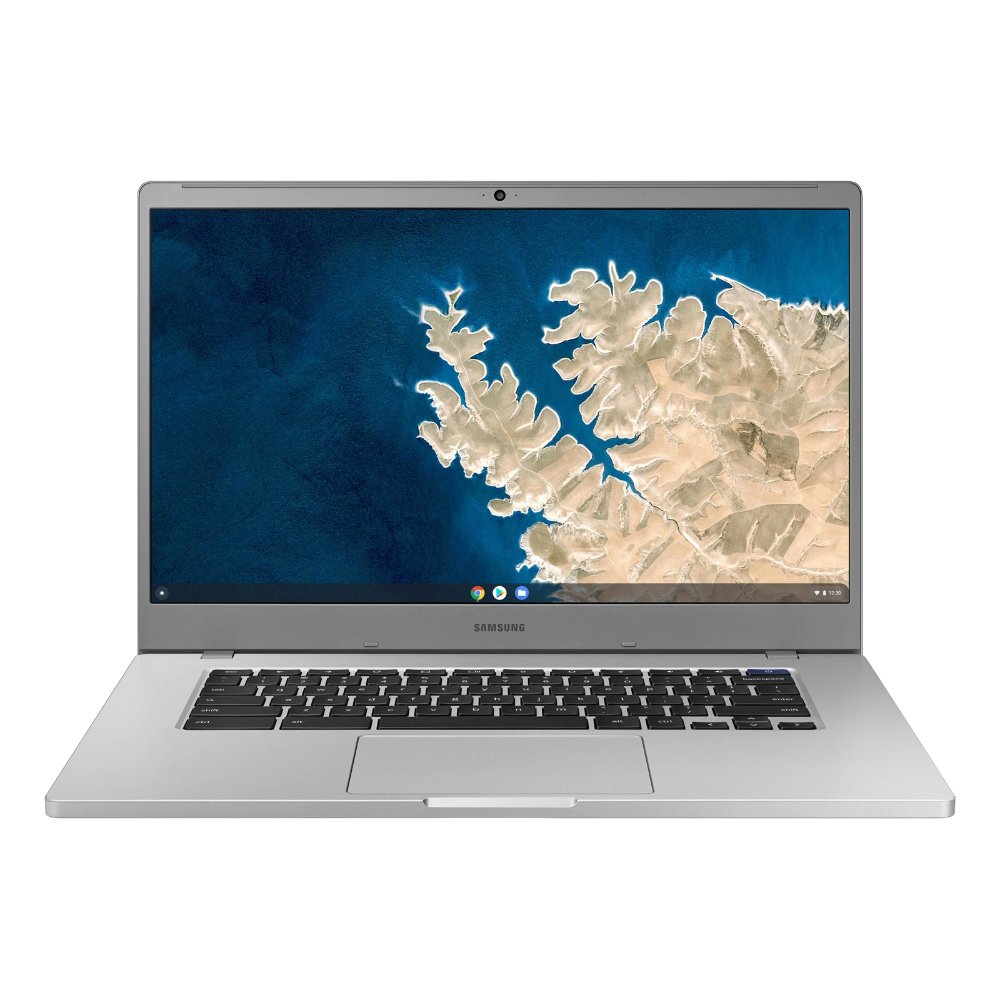

Samsung Chromebook 4+
The Samsung Chromebook 4+ is perfect for students, combining just enough power and a lightweight design with a large, 3:2 display that is perfect for getting schoolwork done on the go.
Best Touchscreen Chromebook: Lenovo Chromebook Duet 3
|
Pros |
Cons |
|---|---|
|
10-inch touchscreen |
Keyboard could be better |
|
Removable keyboard |
Mid-range performance |
|
Very affordable |
Lenovo's Duet series has been one of the most popular Chromebook lines. The Duet 3 continues that with an excellent touchscreen, lightweight design, and detachable keyboard.
The Duet 3 has a 10.1-inch touchscreen with a 1920x1200 resolution. You may prefer using the touchscreen as the keyboard leaves a little to be desired, but it is nice to have. The Chromebook includes a kickstand for using it in laptop mode.
Lenovo is powering the Duet 3 with a MediaTek processor and 4GB of RAM, which is pretty solid mid-range performance for a Chromebook. The battery life should easily get you through a full day of web browsing and streaming.
Perhaps the best thing about the Duet 3 is the price. Starting at around $300, it's an excellent buy for the budget-conscious who want a touchscreen laptop and tablet.
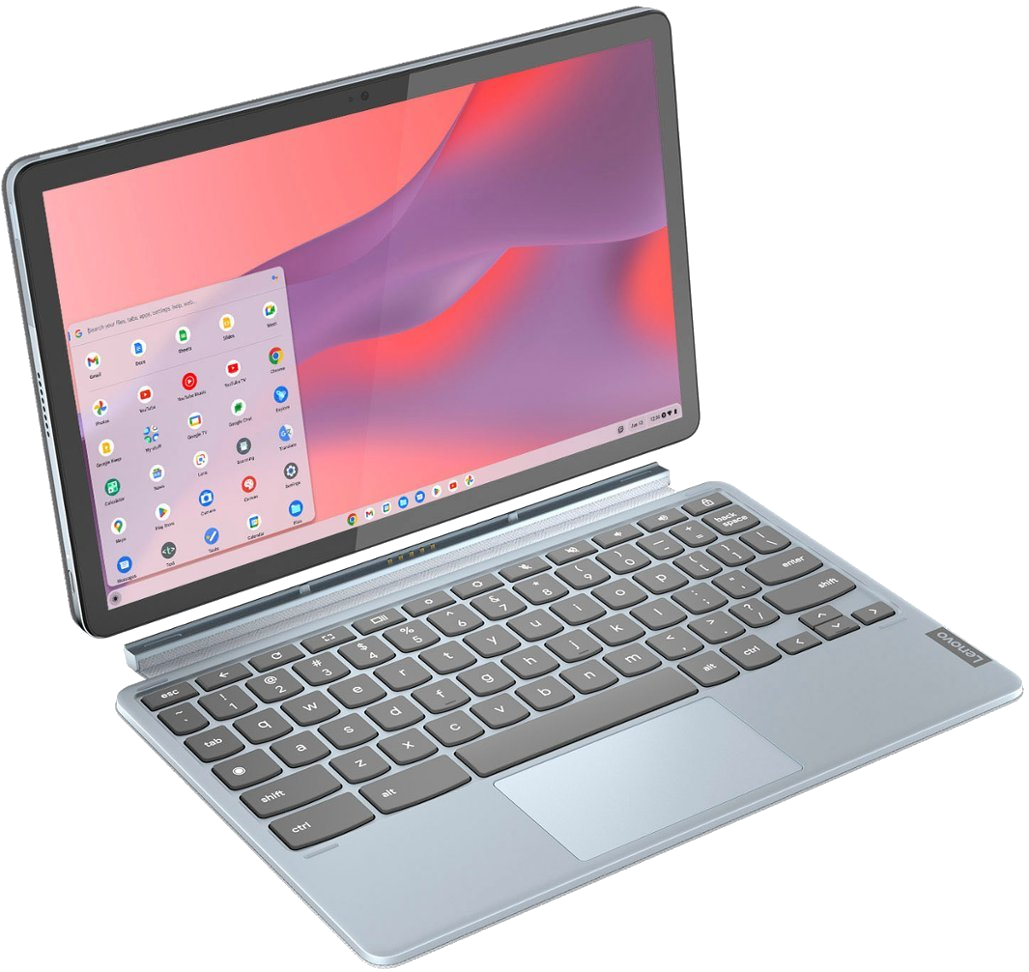

Lenovo IdeaPad Duet 3
The Chromebook Duet 3 is a super affordable Chromebook with a great touchscreen and detachable keyboard.
Best 2-in-1 Chromebook: Samsung Galaxy Chromebook 2 360
|
Pros |
Cons |
|---|---|
|
Higher resolution display than many Chromebooks |
Performance isn't on par with the display |
|
Stylish 2-in-1 design |
|
|
Excellent battery life |
|
|
Lightweight and portable |
Chromebooks often represent the halfway point between the functionality of a tablet and a laptop, but detachable designs can be too fiddly for some. A 2-in-1 design offers the versatility of a tablet-style design, but they’re more flexible and don’t usually require accessories. The Samsung Galaxy Chromebook 2 360 offers a fantastic example for why this type of 2-in-1 is perfect for most people.
The 2-in-1 design may be the first thing you notice about the Galaxy Chromebook 2 360, but use it for any amount of time, and you’ll discover its real strength: its 12.4-inch, 2560 x 1600 display. A display this sharp is somewhat rare, even on higher-end Chromebooks, so it’s nice to see in this more affordably priced model.
The Intel Celeron N4500 chipset and 4GB RAM aren’t as impressive as the display, but they do have somewhat of an upside. This hardware doesn’t drain the battery like more powerful hardware, allowing extended battery life.
The Samsung Galaxy Chromebook 2 360 comes in silver and is available in 64GB and 128GB storage configurations.
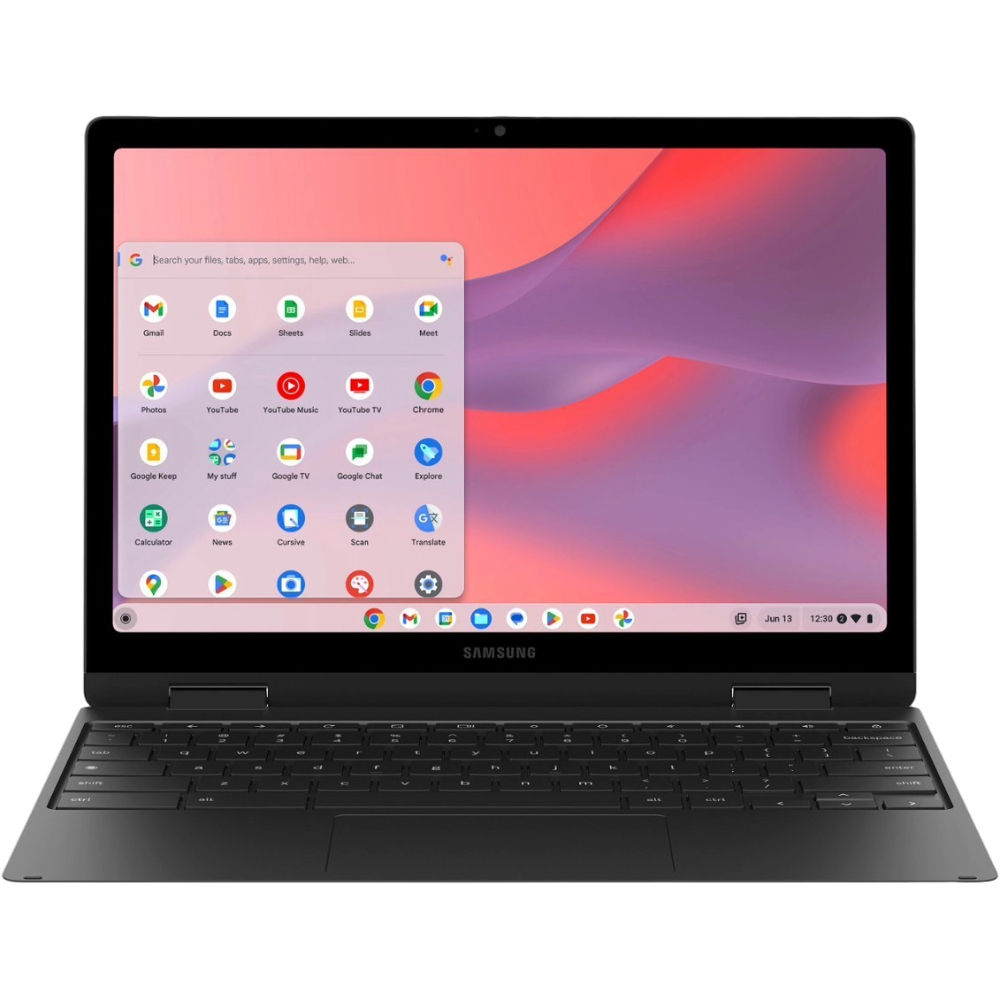

Samsung Galaxy Chromebook 2 360
One of the major advantages of a 2-in-1 is easy access to the touchscreen, and that's even better in the Samsung Galaxy Chromebook 2 360 thanks to its high-resolution 2560 x 1600 display.
FAQ
What is the difference between a Chromebook and a laptop?
A Chromebook is a laptop that runs Google's Chrome OS. A laptop is a general term for any computer with a screen attached to a keyboard, which could be Chrome OS, Windows, macOS, etc.
How do I take a screenshot on a Chromebook?
There are a number of ways to take a screenshot on a Chromebook. You can use the screen capture tool, Ctrl+Window key, Ctrl+Shift+Window key, or the stylus if you have one.
How do I use emojis on a Chromebook?
You can bring up the emoji picker by right-clicking and selecting "Emoji" or press the Search/Launcher key+Shift+Space.
How do I right-click on a Chromebook?
Right-clicking on a Chromebook works the same as other computers. Right-click the mouse if you have one connected, or tap the touchpad with two fingers.
Can I connect my Apple AirPods to my Chromebook?
You can connect AirPods to a Chromebook through the Bluetooth menu. We have full instructions for connecting Bluetooth devices.

